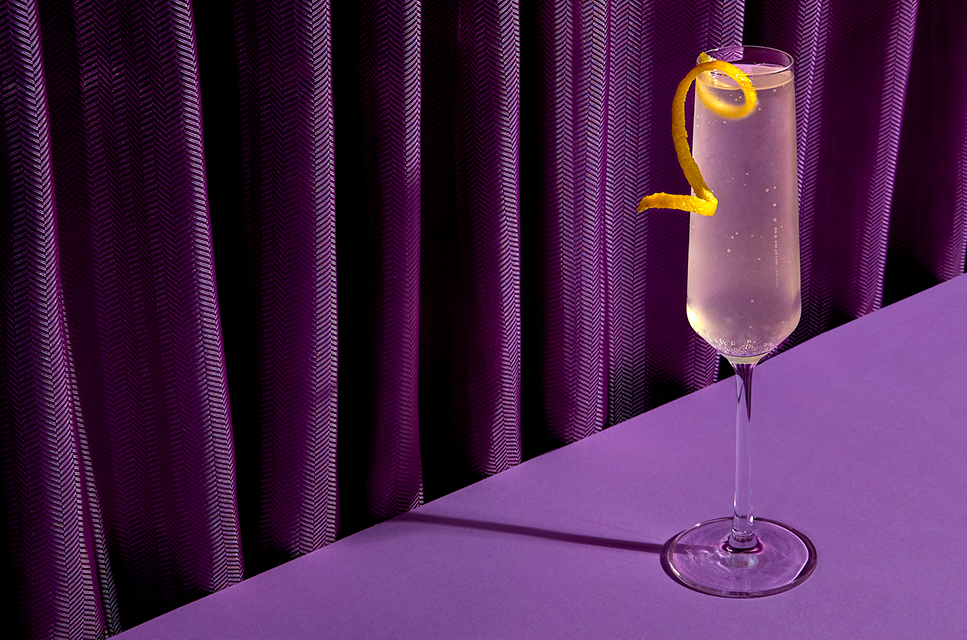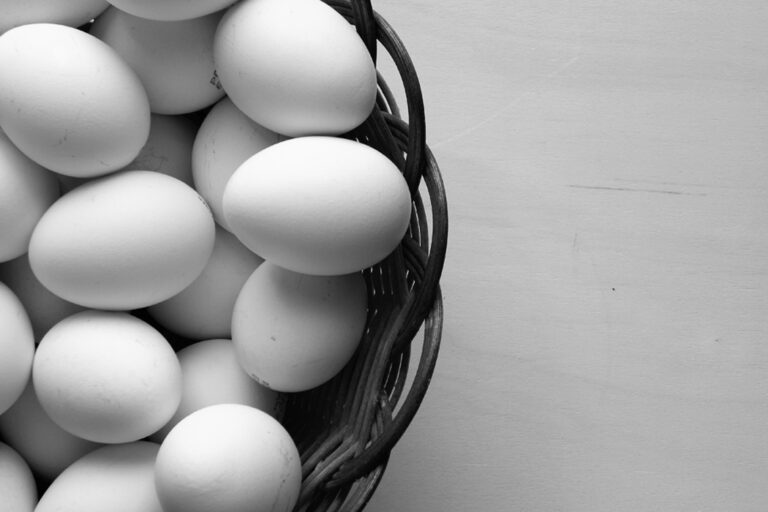When crafting the perfect Mimosa, the selection of Champagne is a crucial component that can enhance or detract from the overall experience of this beloved brunch cocktail. [read the full champagne story]
Estimated reading time: 11 minutes

A Mimosa is a refreshing mix typically composed of equal parts sparkling wine and chilled citrus juice, usually orange. Ideally, you aspire to strike a harmonious balance between the wine’s effervescence and the juice’s fresh zestiness.
Since Mimosas are a staple at brunch gatherings, the choice of Champagne can significantly influence the flavor and quality of the drink. While true Champagne, hailing from the Champagne region of France, is esteemed for its intricate flavor profile, it is not the only option for a delectable Mimosa. You might ponder whether the prestige of Champagne is a necessity or if a more cost-effective sparkling wine could suffice.
In considering budget and quality, bear in mind that the Champagne’s nuances are often subtle and may be overshadowed by the sweetness and acidity of the orange juice. Therefore, it might be pragmatic to opt for a drier style of sparkling wine — such as a Brut — which can counterbalance the juice’s sweetness without commanding the higher price tag of renowned Champagne brands. Yet, if you’re celebrating a special occasion or prefer the depth of a genuine Champagne, selecting a quality bottle will certainly contribute to a more exquisite and memorable Mimosa.
The Origin and Popularity of Mimosas
The Mimosa, a bubbly brunch cocktail, owes its roots to early 20th-century France and has since become synonymous with leisurely weekend gatherings.
Historical Background
In the 17th century, the traditional method for creating sparkling wine was perfected in the region of Champagne, France. Fast forward to world history’s 1920s, and you land in the establishment of the Mimosa. This refreshing cocktail, typically made by mixing equal parts of Champagne and chilled citrus juice, is named after the vibrant yellow mimosa flower.
Why Mimosas Are a Brunch Staple
Mimosas found their niche as a brunch cocktail due to their light and effervescent qualities. They boast the sophistication of Champagne with a down-to-earth twist, making them accessible. Your weekend brunch is elevated with the addition of this simple yet elegant drink, which has culturally been tied to celebrations and social gatherings.
Understanding Champagne and Sparkling Wines
When selecting a champagne or sparkling wine for your mimosa, it’s essential to understand the differences in taste, origin, and production methods to make an informed choice.
Different Types of Champagne
Champagne refers to sparkling wine that comes exclusively from the Champagne region of France. There are several types of Champagne:
- Brut: A dry style that is the most popular for mimosas; it has less than 12 grams of residual sugar per liter.
- Blanc de Blancs: Made exclusively from white grapes, typically Chardonnay, and offers a light, fresh flavor.
- Rosé: A pink Champagne that owes its color to the inclusion of Pinot Noir and/or Meunier in the blend.
- Vintage Champagne: Produced from grapes harvested in a single year, only made in exceptional vintages and aged longer.
Notable brands and their offerings include:
- Veuve Clicquot Brut: A well-known Brut Champagne with a perfect balance of power and finesse.
- Chandon Brut Rosé: A fruity Rosé that is both elegant and expressive.
Varieties of Sparkling Wine
While Champagne is from France, many excellent sparkling wines come from other regions:
- Cava: Hailing from Spain, Cava is made in the same traditional method as Champagne. A great example is the Campo Viejo Cava Brut Reserva, known for its crisp, refreshing palate.
- Prosecco: Originating from the Veneto region in Italy, Prosecco is typically lighter, fruitier, and more approachable than others. La Marca Prosecco and Mionetto Prosecco are popular choices from this category.
- Non-Alcoholic Sparkling Wine: Made from grape varieties similar to alcoholic versions but without the fermentation process, allowing those who don’t consume alcohol to enjoy the sensation of a sparkling beverage.
Most traditional Champagne is made from a blend of grape varieties, primarily:
- Chardonnay: Contributes to the elegance and acidity.
- Pinot Noir: Adds body and complexity.
- Meunier: Provides a rich fruitiness.
When you select a sparkling wine for your mimosa, consider the flavor profile you prefer and whether you want a classic French Champagne or a sparkling wine from other notable regions like Veneto’s Valdobbiadene for Prosecco or Uni for Cava.
Selecting the Best Champagne for Mimosas
When making Mimosas, your choice of Champagne can greatly affect the taste and quality of your drink. Selecting the right type will ensure a balance of flavor and effervescence that complements the orange juice.
Classic Choices for Mimosas
For a traditional Mimosa, you might consider a classic brand such as Veuve Clicquot Brut. Its consistent quality and recognizable taste profile make it a safe and appreciated choice. Ruinart Blanc de Blancs is another excellent option, providing a pure expression of the chardonnay grape with a suitable level of dryness that blends well with the sweetness of the juice.
Affordable Options
Sticking to a budget doesn’t mean compromising on quality. Pommery Brut Royal offers an affordable yet sophisticated option, striking a fine balance between cost and taste. Inexpensive Champagnes such as some non-vintage varieties can work well in Mimosas, as their subtler flavors are complemented by the citrus.
| Affordable Champagne | Notes |
|---|---|
| Pommery Brut Royal | Balanced, with vibrant acidity suitable for Mimosas |
| Inexpensive Non-Vintage | A more neutral profile that pairs well with orange juice |
Balancing Quality and Budget
To navigate between quality and budget, you might consider a mid-range Champagne that won’t overshadow the orange juice. Look for options like Perrier Jouët which provide a consistent taste at a price that won’t break the bank, allowing you to enjoy a premium Mimosa without the premium price.
The Role of Dryness and Sweetness
The dryness or sweetness of Champagne is pivotal in a Mimosa. Typically, a dry (brut) Champagne is ideal as it contrasts the sweetness of the orange juice, creating a harmonious balance. Pulp-free orange juice is often used to ensure a smooth texture that allows the effervescence of the Champagne to shine through.
- Brut Champagne: Ideal for those who prefer a drier cocktail.
- Extra Dry Champagne: Offers a touch more sweetness, still works well if you prefer a slightly less dry Mimosa.
Remember to always serve Mimosas well chilled to emphasize the Champagne’s crispness and to better integrate its qualities with the flavors of the orange juice.
Perfecting the Mimosa Ratio and Mix
In creating the perfect Mimosa, the champagne to orange juice ratio is crucial, as is adjusting the components to your taste. Experimentation with alternative ingredients can yield delightful variations.
Traditional Champagne to Orange Juice Ratio
The classic Mimosa mix balances champagne and orange juice in a 1:1 ratio. For a standard serving, combine 2 ounces of champagne with 2 ounces of fresh orange juice. Ensure the champagne is well-chilled before mixing to retain the effervescence and crispness that characterize a well-crafted Mimosa.
Adjusting to Personal Taste
While the traditional ratio serves as a starting point, your personal preference plays a vital role. If you prefer a more robust citrus flavor, increase the orange juice to 1.5 parts for every 1 part champagne. Conversely, if a stronger champagne presence is desired, reverse the ratio, serving 1.5 parts champagne to 1 part orange juice.
Alternative Ratios and Ingredients
For variety, replace orange juice with other citrus or fruit juices like grapefruit, pineapple, cranberry, apple cider, or pear. Consider these ratios for alternative Mimosa mixes:
- Peach Mimosa: Combine 2 ounces champagne with 1 ounce peach juice
- Pear Mimosa: Mix 1.5 ounces pear nectar with 2 ounces champagne
- Grapefruit Mimosa: Blend 2 ounces champagne with 2 ounces grapefruit juice
- Apple Mimosa: Fuse 2 ounces apple cider with 2 ounces champagne
When using denser juices like apple cider or nectars, consider a ratio leaning towards more champagne to lighten the beverage. Always taste and adjust ratios according to your preference and the specific characteristics of the juices and champagne used.
Expanding the Mimosa Experience
To elevate your mimosa enjoyment, consider experimenting with champagne types, integrating seasonal themes, or setting up a dedicated mimosa bar.
Creative Variations
When crafting a Mimosa, selecting the right Champagne is crucial. Aim for a dry (brut) or semi-sweet variant to balance the sweetness of the orange juice. For a twist, try Prosecco for its fruitier profile, or Cava for a zesty spark. Here’s a quick guide:
| Type of Sparkling Wine | Characteristics | Ideal For |
|---|---|---|
| Champagne Brut | Dry, less sweet | Traditionalists seeking authenticity |
| Prosecco | Fruity, floral | A playful, aromatic variation |
| Cava | Citrusy, crisp | A bright, refreshing experience |
Seasonal and Themed Mimosas
For a Festive approach, tailor your Mimosas to seasons or celebrations. For Christmas, add cranberry juice for a cheerful red hue and garnish with rosemary. Consider these seasonal suggestions:
- Spring: Mix with strawberry or peach purée for a fresh taste.
- Summer: Add tropical mango juice and a splash of grenadine for sunset colors.
- Fall: Combine with apple cider and a cinnamon stick for a warm twist.
- Winter: Merge pomegranate juice and drop in a few arils for a jewel-like appearance.
Constructing a Mimosa Bar
Setting up a Mimosa Bar invites you and your guests to explore your creativity. Ensure you have:
- A variety of sparkling wines (Champagne, Prosecco, Cava)
- Several juice options (orange, peach, cranberry, mango)
- Garnishes (strawberries, citrus slices, herbs)
- How to Make Mimosas: Display simple instructions—pour wine into flutes, followed by juice (in a 1:1 ratio), and then adorn with chosen garnishes.
Food Pairings with Mimosas
When choosing food to complement your Mimosa, select dishes that strike a balance between savory and sweet and can stand up to the effervescence and slight acidity of the Champagne.
Classic Brunch Foods
Your Mimosa is the quintessential brunch beverage and pairs exceptionally well with a variety of classic brunch foods. Consider the following pairings to enhance your brunch experience:
- Eggs Benedict: The creamy richness of hollandaise sauce pairs delightfully with the bright acidity of a Mimosa.
- Quiche: A flaky, buttery crust and a savory custard filling make quiche an ideal partner.
- Brioche French Toast: The sweet, eggy brioche soaks up syrup and custard, creating an exquisite match with the bubbly Mimosa.
Complementary Flavors and Textures
To maximize the enjoyment of your Mimosa, focus on foods that share complementary flavors and textures:
- Salty and Fatty Foods: Foods high in fat and salt, such as bacon or sausage, are effectively counterbalanced by the refreshing nature of a Mimosa.
- Sweet and Glazed Treats: Items with sugar or honey glaze, like pastries or honey-drizzled croissants, harmonize with the slight sweetness of the Champagne.
- Fresh Fruit: A fruit salad or fresh fruit slices add a refreshing note that echoes the fruitiness of the Mimosa.
Serving Techniques and Presentation
Creating an impressive Mimosa starts with the right serving techniques and presentation. Attention to the type of glassware, serving temperature, and garnishing can significantly elevate your drinking experience.
Choosing the Right Glassware
Your choice of glassware impacts both the appearance and the effervescence of your Mimosa. For optimal presentation, use a Champagne flute; its tall, narrow shape preserves the bubbles and subtly concentrates the aromas for a better tasting experience. A flute’s design allows you to observe the rising bubbles, enhancing the visual appeal.
| Glassware Type | Description |
|---|---|
| Champagne Flute | Preserves bubbles, ideal for Mimosas. |
Preparation and Serving Temperature
Your Mimosa should be served chilled to maintain the Champagne’s crispness and effervescence. The typical serving temperature for Champagne is between 46°F-50°F. Prior to serving, ensure that you cool the Champagne properly. Pour the orange juice first, then top with Champagne to preserve the fizz.
| Component | Temperature | Order of Pouring |
|---|---|---|
| Orange Juice | Chilled | First |
| Champagne | 46°F-50°F | Second |
Garnishing Your Mimosas
Garnishes can add a touch of elegance and a hint of flavor to your Mimosas. Consider adding raspberries for a burst of color and subtle fruit notes. You can also introduce a hint of complexity with garnishes like a biscuit twist or a honeysuckle sprig, which will lend a delicate vanilla aroma. Add the garnish after pouring to ensure it stands out.
| Garnish | Purpose |
|---|---|
| Raspberries | Adds color and a subtle fruit note. |
| Biscuit Twist | Offers a sophisticated visual appeal. |
| Honeysuckle Sprig | Provides a delicate vanilla aroma. |
Frequently Asked Questions
When selecting Champagne for mimosas, the dryness, quality, price point, and taste profile are crucial factors to consider. This section answers common queries to guide your Champagne choices for the perfect mimosa.
What are the key differences between dry and brut Champagnes for making mimosas?
Dry Champagne, often labelled as ‘sec’, contains a moderate amount of sugar and offers a balance of sweetness. On the other hand, brut Champagne is drier with lower sugar content, imparting a sharper, crisper taste to mimosas.
Can you recommend affordable yet quality Champagnes for mimosas?
Consider brands like G.H. Mumm Grand Cordon Brut and Moët & Chandon Imperial Brut for a balance of affordability and quality. These Champagnes offer a refined taste without the high-end price tag.
What are some alternatives to Champagne when making a mimosa?
Prosecco from Italy or Cava from Spain are excellent alternatives to Champagne. They are often less expensive, and their light and fruity profiles mix well with orange juice in mimosas.
Which is preferable for mimosas, a sweeter Champagne or a more acidic one?
For mimosas, a more acidic Champagne can provide a refreshing contrast to the sweetness of the orange juice. However, if you prefer a less tart beverage, opt for a sweeter Champagne.
What types of sparkling wines are suitable for a classic mimosa apart from Champagne?
Apart from Champagne, other sparkling wines like Prosecco, Cava, and American sparkling wines can be used for a classic mimosa. They should be well-chilled and possess a good balance between fruitiness and acidity.
Where can I find the best Champagne for mimosas at mainstream retailers?
Mainstream retailers like Total Wine, BevMo, and local liquor stores often carry a selection of Champagnes suitable for mimosas. Look for well-known brands like Veuve Clicquot or lesser-known labels with good reviews within your budget.





